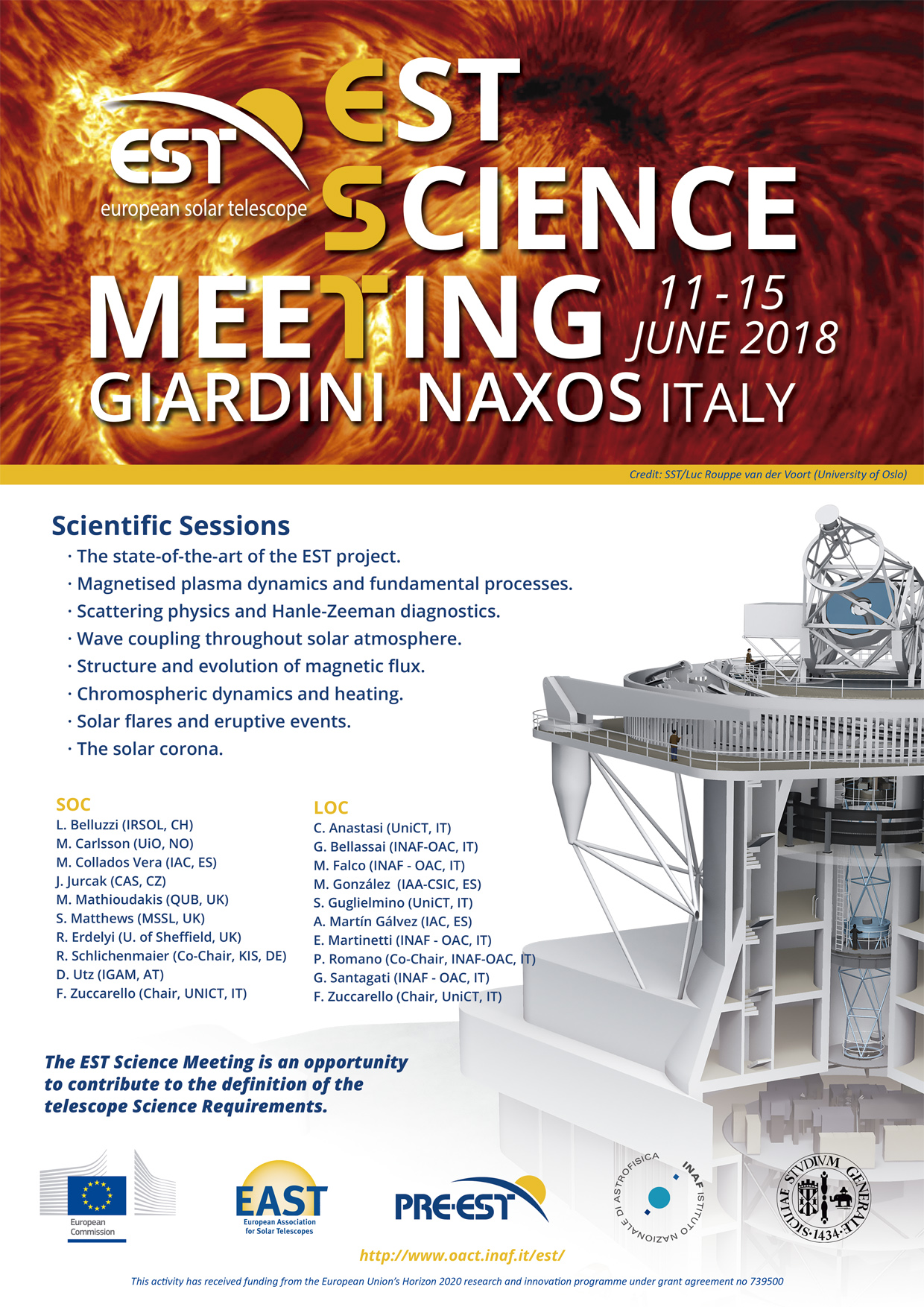The EST Science Meeting will be held on June 11-15 2018 at Giardini Naxos, in Sicily (Italy).

This upcoming EST Science Meeting aims at gathering scientists who wish to present their most recent theoretical and observational research in the field. The meeting will highlight the key science cases that will be addressed by the 4-metre class solar telescopes, and the synergies with both current and future ground-based and space-borne facilities. During the EST Science Meeting the main characteristics and science goals of the EST project will be presented to the scientific community to maximize the sharing of knowledge about the project and provide awareness of the potential telescope capabilities. It will also provide an opportunity to contribute to the definition of the telescope Science Requirements. A Science Requirements Document, describing how and why the unique capabilities of EST will provide answers to several key science questions, will be presented at the meeting. EST will be the heritage of the entire solar physics community and, for this reason, it is expected that the scientific community and in particular the EST Science Meeting participants, will contribute with science cases that will then be reflected in the Science Requirement Document. Scientific Sessions The state-of-the-art of the EST project Structure and evolution of magnetic flux Wave coupling throughout solar atmosphere Chromospheric dynamics and heating Magnetised plasma dynamics and fundamental processes The solar corona Solar flares and eruptive events Scattering physics and Hanle-Zeeman diagnostics
SOC
L. Belluzzi (IRSOL, CH),
M. Carlsson (UiO,NO),
M. Collados Vera (IAC, ES),
J. Jurcak (CAS, CZ),
M. Mathioudakis (QUB, UK),
S. Matthews (MSSL, UK),
R. Erdelyi (U. of Sheffield, UK),
R. Schlichenmaier (Co-Chair, KIS, DE),
D. Utz (IGAM, AT), and Prof. Francesca Zuccarello (Università degli Studi di Catania, This email address is being protected from spambots. You need JavaScript enabled to view it.)
More info: http://www.oact.inaf.it/est/
